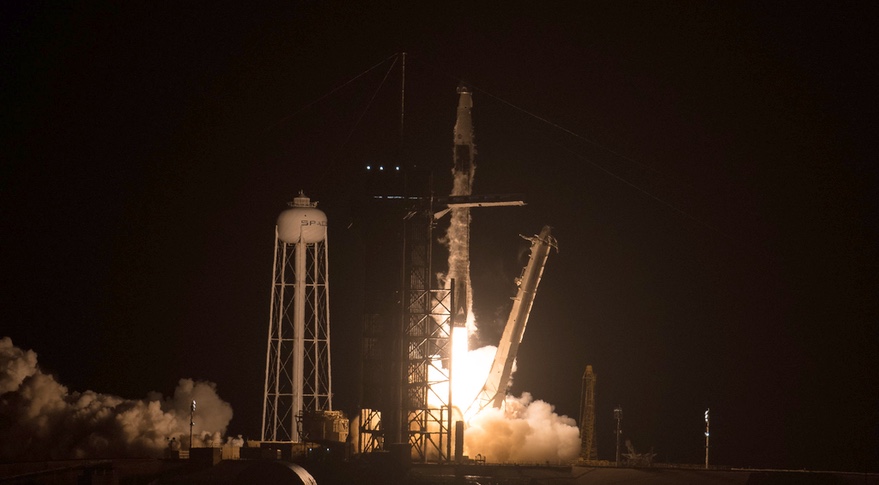WASHINGTON — NASA is delaying the next commercial crew mission to the International Space Station by nearly a month after the Falcon 9 booster that will launch it was damaged during transport across the country for testing.
NASA announced July 21 that the Crew-5 mission is now scheduled for launch no earlier than Sept. 29, after previously being scheduled for early September. The spacecraft will transport NASA astronauts Nicole Mann and Josh Cassada, JAXA astronaut Koichi Wakata and Roscosmos cosmonaut Anna Kikina to the station.
The revised launch date, NASA said in the statement, “will allow SpaceX to complete hardware processing.” Crew-5 will now arrive at the ISS after a Soyuz crew handover in mid-September, when Soyuz MS-22 arrives with Roscosmos cosmonauts Sergey Prokopyev and Dmitry Petelin and NASA astronaut Frank Rubio. Soyuz MS-21 will return with Roscosmos cosmonauts Oleg Artemyev, Sergey Korsakov and Denis Matveev.
The Crew-5 launch will use a new Falcon 9 booster, a relatively rare event given SpaceX’s extensive reuse of boosters. NASA said in a statement that SpaceX had to remove the rocket’s interstage — the section between the booster and upper stage — and some instrumentation after they were damaged during transport from SpaceX’s factory in Hawthorne, California, to its booster testing site in McGregor, Texas.
SpaceX performed inspections and testing of the booster to confirm the damage was limited to the interstage, work that NASA said it reviewed. The booster will now undergo regular stage testing at McGregor ahead of certification for flight.
Neither SpaceX nor NASA disclosed when the booster was damaged. At a July 13 prelaunch briefing for the CRS-25 cargo Dragon mission to the station, Dana Weigel, NASA ISS deputy program manager, said they were still planning a launch of Crew-5 at the beginning of September.
However, at a July 20 briefing about the Artemis 1 mission, NASA officials said the launch had slipped. That mission has three potential launch dates of Aug. 29, Sept. 2 and Sept. 5, which raised questions of potential conflicts with Crew-5 launching in early September.
“Before Crew-5 slipped, we were working closely with them,” Jim Free, associate administrator for exploration systems development, said of discussions with the commercial crew program about coordinating launches. “We’re going to put the same thing into practice if we end up going towards the end of September.”
Ironically, NASA has become increasingly comfortable flying astronauts on reused Falcon 9 boosters and Crew Dragon spacecraft. The Crew-4 mission that launched to the station in April used a Falcon 9 booster making its fourth flight.
“As both NASA and SpaceX have gained experience with working together and SpaceX has accumulated a flight history on both the Falcon 9 booster and Dragon capsule, NASA has been thinking carefully about reuse and their certification process for reuse,” said Sandra Magnus, a member of NASA’s Aerospace Safety Advisory Panel, during a July 21 meeting of the panel.
“As a result, NASA has determined they are comfortable with up to a five-time reuse for both the Falcon 9 and the Crew Dragon capsule,” she said.
